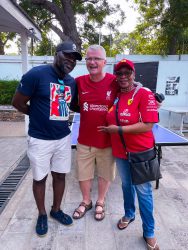- Investment policy guidelines missing
- Investment Advisory Committee absent
- BoG tightlipped over ‘ poor’ investment returns
In deciding which models to adopt in managing its petroleum industry, Ghana hurried to Norway, a country hailed across the globe for its efficient management of the sector, for tutorials.
But at a time when Norway’s sovereign wealth fund is said to be worth a whopping US$1 trillion over 20year period , over 20year period of investment mangers of Ghana ‘s petroleum funds which are invested abroad, do not seem bothered about the country’s is earning.
Management of Ghana Petroleum Funds deserves anything but praise.
Since 2011, the funds worth US$591 Million, have generated very little in returns as those tasked with their management are either not present or lack the requisite tools to be able to perform the job for which they are being paid.
How it started
To ensure judicious and efficient use of the new-found wealth Parliament passed the Petroleum Revenue Management Act (PRMA Act 815) which, among other things the Ghana Stabilisaton Fund, to cushion government in times of poor petroleum revenue inflows , and the Ghana Heritage Fund, an endowment fund for future generations.
The funds are known together as the Ghana Petroleum Funds (GPF) and are held at the Federal Reserve Bank of New York in a bid to take advantage of investment opportunities in the US market.
According to the PRMA to ensure monies in the Ghana Petroleum Funds are properly invested to attract maximum yields, an Investment Advisory Committee (IAC), comprising seven members with requisite knowledge and experience in investment, be set up.
This committee according to the Act, advises the Finance Minister on the broad investment guidelines and overall management strategies relating to the central bank.
Another crucial function of the committee is to develop for the Finance Minister investment guidelines, the benchmark portfolio, the desired returns from and the associated risks of the funds lodged at the central bank, taking into consideration the investment guidelines used by the Bank of Ghana for investments of a similar nature.
The problem however is that this all-important committee has not been constituted since it was dissolved when the NPP came into power on January 7 ,2017.
The investment Advisory Committee has been absent for than 10 months , whilst critical decision are required as time of the essence.
According to the central bank , the Ghana Stabilisation Fund has closing balance of more than US$280 million as June 30,2017 whereas the Ghana Heritage Fund had a balance of about US$311 million.
The PRMA made it clear that these funds, particularly the Heritage Fund be invested for future generation and job of the Investment Advisory Committee would be to supervise the investment of funds and give proper guidelines on how on how they should be invested.
However over the years the advisory committee has not been efficient as it should, leading to low yields.
Infact , in 2014 the B&FT learned that the funds were being traded manually in New York , for want of a US$200,000 software to facilitate timeous trading.
Figures published by the Central bank show that between 2011-2016, the average return of the GSF is 0.53% while that of the GHF is 1.77%
There have times that the funds have recorded negative return which basically means that it cost the government extra monies in investing them.
‘DYSFUNCTIONAL IAC’
According to the Ministry of Finance the committee has submitted only one Annual Report on its Activities , which was in 2012, when it is expected to meet at least once every quarter, which it did at the early stages.
But it was not until 2015 that the committee was able to put together the required Investment Policy Guidelines stated in the PRMA Act 815 passed four years earlier.
Despite reviewing and finalizing the Investment Policy Guidelines , the Committee could not adopt the guidelines as members that attended that fateful meeting could not form a made on the guidelines s’ adoption as a working document.
In October 2016, the members who absented themselves were replaced pursuant to Section 32 (6) of the PRMA which states that a member if they are not present for two consecutive meeting without just causes .
A request made by the B&FT to the Finance Ministry revealed that members who continuously absented themselves and had to be replaced were Ms. Merene Benyah and Samuel Ashitey Adjei.
Ms. Shirley-Ann Awuletey-Williams and Michael N.A Cobbah were nominated to replace the absentees on the advisory committee. Despite the full composition of the committee, it could, however not meet until it was dissolved following the coming to power of the Akufo-Addo administration
Returns in Perspective
The Petroleum Revenue Management Act suggests that petroleum funds should be invested in safe instruments to guarantee returns. It basically cautions against high risk investments so as not to lose any or part of the funds.
The funds are thus held at the Federal Reserve Bank of New York in a bid to take advantage of investment opportunities in the US market.
To see just how poor returns from the GPFs have been, a look at the performance of other investment instruments would not be out of place. The Stabilization Fund is basically a short-term fund which can be drawn down anytime petroleum prices rise above manageable levels, and when government sees the need to shore up its budget.
Its return on investment is thus, pretty much okay when compared to say the US three-month treasury bill, which, which averaged 0.15 percent over the period (2011-2016) compared to the o.53 percent achieved on the GSF.
However, the long term focus of the GHF makes it possible for it to be compared with the S&P 500 and a 60/40 Portfolio,i.e 60% US 10-year bonds and 40% US stocks represented by the S&P 500. This is because owning stocks only is not out of place for a fund which is long-term in nature.
And the average return of 10.54% of the S&P 500 since 2011 handily beats the 1.77% Return of the GHF and 6.48% portfolio.
Has the BoG repented
In 2014 a BoG official told the B&FT that ‘Our greatest challenge is with the systems. We do not really have systems we use in trading and in generating reports.
So, these are done manually.
For instance , with the investment there are systems: you trade and it goes all the way to settlement . But because we do not have this presently we do it manually.
It is time-consuming and creates room for errors . this really limits our ability to perform our role effectively he said.
This was three years ago. But having seen that the performance of the GPF’s has barely seen any improvement between the time the central bank official made that the manual system will prevails.
In a letter dated September 28,2017 the B& FT sought to understand from the central bank how the petroleum funds are traded, among other things.
Having acknowledged receipt of the letter, however the BoG would not respond to the questions the newspaper posed, preferring to keep mute over the matter.
The newspaper ‘s persistence with the follow-up calls is yet to yield any dividends.
As things stand now , Ghana is likely to end the year without the Investment Advisory Committee being put in place as required by the PRMA , as the funds supposedly set aside for the future , Whilst critical investment are required in public goods and social expenditure , continue to be treated in a nonchalant manner.










